Stretching For Better Balance Enhancing Stability And Coordination
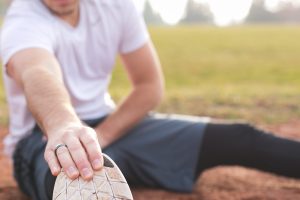 Many people at V.I.P. 1 to 1 Fitness Center in Fort Lee, NJ, use stretching as a warm-up or cool-down exercise. When done at the end of a workout, it increases flexibility to prevent injuries that can occur when muscles are tight. People often overlook stretching to improve balance, stability, and coordination. These abilities are often overlooked but play a huge role in safety. If your coordination, stability, or balance are lacking, walking isn’t easy and can cause an injury. Even walking on a flat surface without falling can be difficult.
Many people at V.I.P. 1 to 1 Fitness Center in Fort Lee, NJ, use stretching as a warm-up or cool-down exercise. When done at the end of a workout, it increases flexibility to prevent injuries that can occur when muscles are tight. People often overlook stretching to improve balance, stability, and coordination. These abilities are often overlooked but play a huge role in safety. If your coordination, stability, or balance are lacking, walking isn’t easy and can cause an injury. Even walking on a flat surface without falling can be difficult.
Balance is vital for independent living.
You don’t have to hike, ski, or try to stand on a moving train to appreciate how beneficial good balance is. You use it when you climb stairs or step on a cat toy or sock lying on the floor. Any uneven surface could cause a fall if your balance is askew. Without good balance, even walking on level ground can cause a fall. Doing calf, hip, quad, and hamstring stretches can help with balance. They keep your muscles loose so your joints align correctly. One example of good balance is standing on one foot without falling.
Stretching helps you maintain stability.
Stability and balance go hand in hand, but they’re not the same. Balance is about your weight evenly distributed to avoid falling. Stability is about the ability to stay erected and grounded against external forces. If someone pushes another lightly, a person with stability issues might fall, while one who is stable will remain standing. Stretches that work the core, hips, and knees contribute to stability.
Coordination synchronizes muscles to make movement efficient.
Consider all the different muscles you use when you take one step, yet you probably do it seamlessly without thinking. That’s because your muscles work together and perform simple actions with ease. Compare that to the first time you tried to ski or do a new dance move. You probably looked and felt awkward. Without coordination, it doesn’t matter how balanced or stable your body is: each movement is challenging and takes extra thought. In addition to the stretches already mentioned, doing upper body stretches, such as rolling a ball up a wall as your body remains in the same spot, is another stretch to add.
- Do dynamic stretching before you exercise to warm muscles and static stretching to increase the range of motion near the end when the muscles are warm.
- Stretching improves the range of motion and can improve your posture. If your posture is perfect, it helps your balance and stability.
- Stretching helps strengthen muscles and improves the range of motion. The stronger and more flexible the muscles are, particularly in the lower body, the more improved balance and stability are.
- Standing on one leg challenges balance. Start with your feet hip-width apart. Lift one foot and hold for 10-30 seconds. Lower it and do the other leg. You can make it harder by grasping the shin of the lifted leg and pulling it toward you or closing your eyes when doing the stretch.
For more information, contact us today at VIP Fitness Center


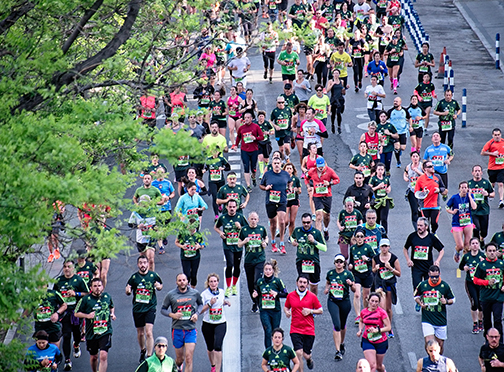
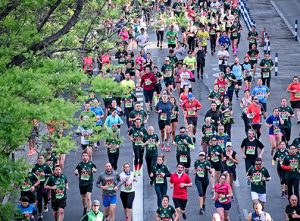 If you’ve never run competitively before and want to plan and prepare for a marathon (26.2 miles) or half-marathon (13.1 miles), you need to start a training plan and stick with it at least six up to fifteen weeks before you expect to compete. Start by entering shorter competitions like the 5K (3.1 miles) or 10K (6.2 miles). Entering shorter races makes you more aware of your skills and how competition can alter the way you run when you’re running solo.
If you’ve never run competitively before and want to plan and prepare for a marathon (26.2 miles) or half-marathon (13.1 miles), you need to start a training plan and stick with it at least six up to fifteen weeks before you expect to compete. Start by entering shorter competitions like the 5K (3.1 miles) or 10K (6.2 miles). Entering shorter races makes you more aware of your skills and how competition can alter the way you run when you’re running solo.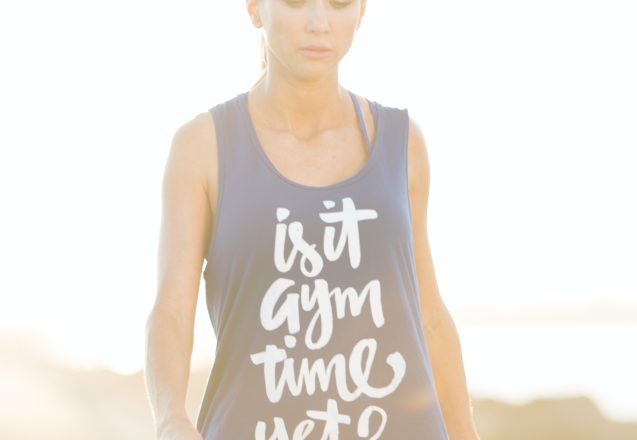
 Do you get anxious when you think of starting a formal exercise program? Some people in Fort Lee, NJ, do. They have gym anxiety. It’s scary and often puts an end to any thought of exercise. There are ways to overcome it and get back into shape. You need to identify why you’re feeling uncomfortable and have anxiety. Is it because you’re overweight? Do you worry you can’t do all the exercises? Are you concerned others will judge you?
Do you get anxious when you think of starting a formal exercise program? Some people in Fort Lee, NJ, do. They have gym anxiety. It’s scary and often puts an end to any thought of exercise. There are ways to overcome it and get back into shape. You need to identify why you’re feeling uncomfortable and have anxiety. Is it because you’re overweight? Do you worry you can’t do all the exercises? Are you concerned others will judge you?
 Breathwork has two different functions for health and fitness. One type of breathwork can help you relax your body and your mind. The other breathwork is part of improving your athleticism and form. Using proper breathing techniques during exercise improves results. Focusing on breathwork during daily life can improve your mood and overall health.
Breathwork has two different functions for health and fitness. One type of breathwork can help you relax your body and your mind. The other breathwork is part of improving your athleticism and form. Using proper breathing techniques during exercise improves results. Focusing on breathwork during daily life can improve your mood and overall health.
 You can’t out-exercise a bad diet. Whether your fitness goal is building muscles, boosting energy, or losing weight, your nutrition plays a vital role. It provides the building blocks for everything from hormones that burn fat and help build muscles. A healthy diet is lower in calories and higher in nutrients necessary for every cell in your body to function. If you consume too many empty, high-calorie foods, you could exercise all day and not lose weight.
You can’t out-exercise a bad diet. Whether your fitness goal is building muscles, boosting energy, or losing weight, your nutrition plays a vital role. It provides the building blocks for everything from hormones that burn fat and help build muscles. A healthy diet is lower in calories and higher in nutrients necessary for every cell in your body to function. If you consume too many empty, high-calorie foods, you could exercise all day and not lose weight.
 You can improve your flexibility, no matter your age. Every day in Fort Lee, NJ, at least one person has pulled a muscle doing daily tasks. It can be as simple as bending down to tie your shoelace when you feel that searing pain shoot down your spine, hip, or leg. Stretching and flexibility exercises are vital to fitness. People who have a wider range of motion have fewer injuries in sports. It protects the muscles from injury. No matter how much you can lift, a pulled muscle makes you weaker than someone who never had strength training.
You can improve your flexibility, no matter your age. Every day in Fort Lee, NJ, at least one person has pulled a muscle doing daily tasks. It can be as simple as bending down to tie your shoelace when you feel that searing pain shoot down your spine, hip, or leg. Stretching and flexibility exercises are vital to fitness. People who have a wider range of motion have fewer injuries in sports. It protects the muscles from injury. No matter how much you can lift, a pulled muscle makes you weaker than someone who never had strength training.
 When you exercise, you build your body’s strength, endurance, and flexibility. You burn extra calories and trigger the release of endorphins throughout your body that make you feel good. You’ll improve your posture and your appearance. You might say that exercise can change your life. It improves your self-image. That can affect every area of life, whether it’s personal or professional. It takes consistency to achieve your goals, but the benefits make it worthwhile. You’ll feel like an entirely new person with extra energy and vigor.
When you exercise, you build your body’s strength, endurance, and flexibility. You burn extra calories and trigger the release of endorphins throughout your body that make you feel good. You’ll improve your posture and your appearance. You might say that exercise can change your life. It improves your self-image. That can affect every area of life, whether it’s personal or professional. It takes consistency to achieve your goals, but the benefits make it worthwhile. You’ll feel like an entirely new person with extra energy and vigor.
 In Fort Lee, NJ, you can get the body you want. We can help you do it. Of course, it has to be achievable. If you are 5’5″ and want to be 6’2″, we can’t help, but if you want to look and feel your best and be the best version of yourself, get ready to start on the road to success. It’s not always easy. It takes the right program and a consistent effort. We can help you with both. We tailor the program to your goals, special needs, and fitness level. Our personal trainers motivate you to reach it.
In Fort Lee, NJ, you can get the body you want. We can help you do it. Of course, it has to be achievable. If you are 5’5″ and want to be 6’2″, we can’t help, but if you want to look and feel your best and be the best version of yourself, get ready to start on the road to success. It’s not always easy. It takes the right program and a consistent effort. We can help you with both. We tailor the program to your goals, special needs, and fitness level. Our personal trainers motivate you to reach it.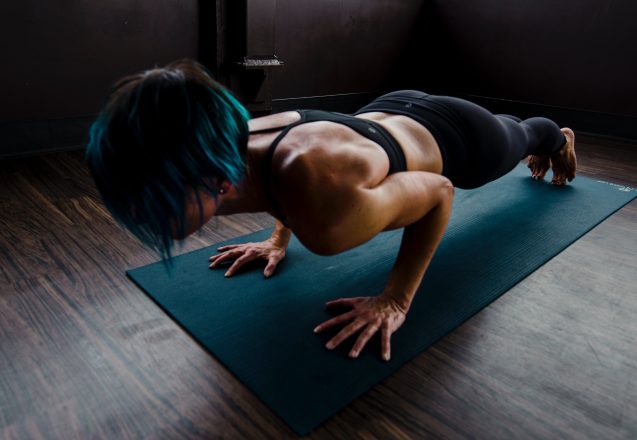
 Most people don’t know the difference between high and low-impact workouts. Running is a high-impact workout while walking is a low-impact one. When you run, once in every stride, both feet are off the ground. When the foot lands, it takes the impact of the body weight hitting the ground. When walking, you always have one foot on the ground, limiting the impact. If you are severely overweight or already have joint issues, high-impact exercises can cause joint injury. You don’t have to risk it to get a good cardio workout with these exercises.
Most people don’t know the difference between high and low-impact workouts. Running is a high-impact workout while walking is a low-impact one. When you run, once in every stride, both feet are off the ground. When the foot lands, it takes the impact of the body weight hitting the ground. When walking, you always have one foot on the ground, limiting the impact. If you are severely overweight or already have joint issues, high-impact exercises can cause joint injury. You don’t have to risk it to get a good cardio workout with these exercises. Many people in Fort Lee, NJ, believe snacking is bad for you, especially if you’re trying to lose weight. That’s not true. It can be healthy when you choose the right food. Don’t select a bag of M&M’s, even ones containing nutritious peanuts. Search out snacks that are low in calories and loaded with vitamins, minerals, and phytonutrients. They should satisfy your hunger for longer and taste good. If you’re trying to lose weight, keep them under 200 calories.
Many people in Fort Lee, NJ, believe snacking is bad for you, especially if you’re trying to lose weight. That’s not true. It can be healthy when you choose the right food. Don’t select a bag of M&M’s, even ones containing nutritious peanuts. Search out snacks that are low in calories and loaded with vitamins, minerals, and phytonutrients. They should satisfy your hunger for longer and taste good. If you’re trying to lose weight, keep them under 200 calories.